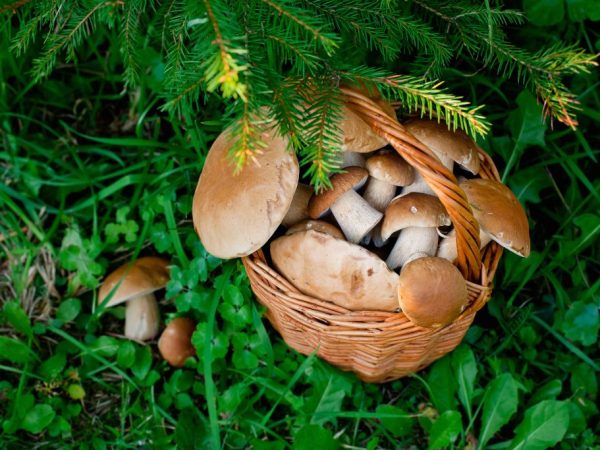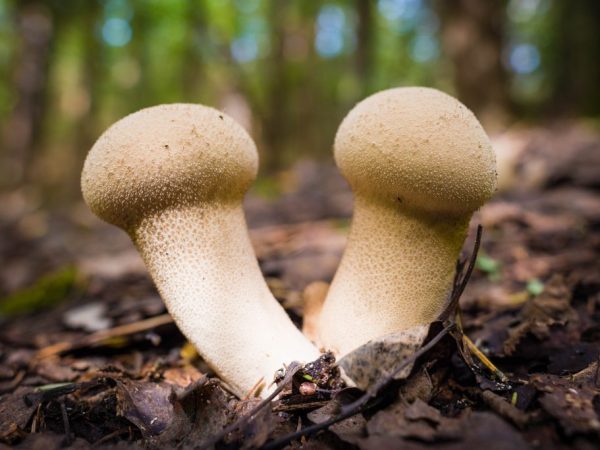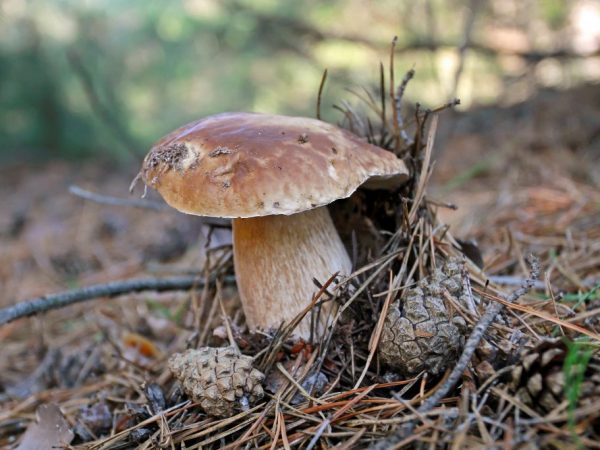Edible mushrooms of the Stavropol Territory
Mushrooms do not belong to either the plant or the animal world, they are special forest organisms allocated by scientists to the kingdom of Mushrooms. Scientists have not yet been able to study all of their diversity. Russia is rich in places with stable mushroom harvests every year. Mushrooms of the Stavropol region are harvested almost all year round.

Edible mushrooms of the Stavropol Territory
Description of mushrooms
Mushrooms in the Stavropol Territory are harvested from the first spring month to December inclusive. Some species already grow under the snow.
A trip to the forest is not only a pleasant event, but also a responsible one, you should be well prepared for it in order to feel comfortable and safe.
Before the hike, mushroom pickers must decide for what purpose the collection will be made, which specimens need to be found.
The species differ in quality and taste. The main division is carried out according to the category (degree) of edibility:
- Category 1: edible;
- Category 2: conditionally edible;
- Category 3: inedible;
- 4 category: poisonous.
This division is based on the presence of toxins in forest organisms. Only mushrooms are suitable for a raw food diet, which belong to the 1st category of edibility: russula, champignons, white mushrooms, etc. They are safe for the human body and conditionally edible. But in terms of their quality, they are much inferior to edible ones. This group requires prolonged soaking to eliminate the bitter aftertaste, so cooks prefer to use them only for pickling * cold and hot) and pickling.
Forest mushrooms from category 3 (inedible) will not do any harm if they accidentally fall into a dish. Their aroma and taste are not of high quality.
Amanita, toadstools, gall and satanic mushrooms are the most common poisonous mushrooms. It is difficult to remove toxins from them at home, but it is not possible to say for sure. In order not to endanger life, it is better not to collect them in the forest.
Flavor categories
There are 4 flavors in total:
- 1 category: the most fragrant and delicious (different types of white, white and black milk mushrooms);
- Category 2: slightly worse in taste (boletus, boletus and boletus);
- Category 3: medium taste, with a weak aroma (mushrooms, podgruzdki, honey mushrooms, russula, green leaves);
- 4th category: mediocre taste and barely perceptible aroma (oyster mushrooms, hedgehogs, cobwebs, milkers).
The last category refers to conditionally edible forest mushrooms. Their improper preparation leads to poisoning, similar to poisoning with poisonous mushrooms.
Types of mushrooms

Giants raincoats grow in Stavropol
The nature of the Stavropol Territory is rich in massifs of broad-leaved oak and hornbeam forests, on the territory of which lovers of "quiet hunting" can find their favorite species and prepare delicious dishes from them at any time of the year.
Early species
The very first organisms appear in the spring. They grow under melted snow on last year's rotten foliage or needles. These early spring species include:
- discina thyroid;
- muer;
- sarcoscif.
They do not have a strong aroma, but are saturated with vitamins and minerals, which are especially useful for winter avitaminosis. Not everyone is able to appreciate their taste, so only rare mushroom pickers collect them.
In the suburbs of Stavropol, mushroom pickers find giant raincoats in May.
By May, the following species appear:
- morels;
- lines;
- honey mushrooms;
- podlivniki;
- oyster mushrooms.
After the rains, their myceliums grow rapidly, the forest is filled with a pleasant aroma.
The first mushrooms appear in meadows. One mycelium is capable of producing a large harvest and filling an entire clearing.
Irina Selyutina (Biologist):
Oyster mushroom is a collective concept denoting a whole family of mushrooms, of which several species are cultivated. The most common is common oyster mushroom (Pleurotus ostreatus), or oyster mushroom. It has a gray or gray-brown cap 5-15 cm in diameter. At a young age, the cap is darker, the flesh is tender, white, with age it coarsens and becomes fibrous. This is especially noticeable in the leg. Oyster mushrooms belong to the group of xyloth mushrooms. During development, the fungus forms whole "multi-storey" structures. Oyster mushroom is considered a predatory fungus that can hunt nematodes using nematotoxin and digest them, thus compensating for the lack of nitrogen in the substrate.
Young oyster mushrooms are found on last year's fallen needles.
Summer views
In the summer, it is better to go to the forest at early dawn, while the dew has not yet left the grass and the sun has not dried the earth. Popular summer types include the following:
- blue leg;
- ordinary rowing;
- summer mushrooms;
- moss and milkmen;
- boletus;
- aspen mushrooms;
- chanterelles;
- mushrooms;
- tricholosporum coal-spore;
- russula.
In the Russian forest, on alkaline soils, a lilac-footed row loves to grow, which in the common people was called "blue leg" or "blue root" because of the color of the pulp in the leg. The fruiting bodies of these mushrooms grow in close rows. Their hats fit tightly to each other so that sometimes they cover the "neighbor".
Tricholosporum - colored in two colors. Mushrooms bear fruit twice a year: in spring and early summer.
Irina Selyutina (Biologist):
Tricholosporum carbonospore is often called "two-flower" or "summer blue root" in the Stavropol Territory. A rather rare species. On the territory of the Russian Federation, it is found in this region, it is assumed that it can be found in the Krasnodar Territory. The cap is up to 15 cm in diameter, the color is clay-yellow with lilac spots, in young mushrooms, in some cases, it can be completely lilac. In young specimens, the cap is hemispherical. In mature, it can be flat with upward curved edges. The hymenophore is lamellar. The plates are frequent, lilac, in mature ones they can be brownish-lilac. There are no bedspreads. The pulp is dense, the taste is sweetish, the smell of flour. The leg is cylindrical, dense, up to 10-15 cm high and up to 2 cm thick. Yellowish-brown, covered with flaky scales.
Lovers of this species easily find entire families near agricultural buildings, pastures, on the outskirts of cities or in clearings in the Russian forest.
Autumn views

Autumn is good for mushroom picking
The end of summer and autumn are the best times for mushroom picking. Summer species are still growing and autumn ones are already appearing:
- autumn mushrooms;
- white and black milk mushrooms;
- white;
- boletus;
- boletus;
- mushrooms.
Mushroom pickers usually find places where thorns grow.
Winter views
In winter, the following late forest mushrooms grow:
- white pig (wen);
- mushrooms are winter.
White pig (wen) - has a mealy aroma and grows in the steppe. It is not touched by insects, so it always looks good and reaches a large size.
Under the first snow in December, forest winter mushrooms continue to grow, which appear on the trunks of healthy and fallen trees.
Rare species
In Arkhyz there is an opportunity to find a rare coral mushroom - coral hedgehog. Its description is similar to the description of underwater "relatives". The largest specimens reach 50 cm.The product is suitable for food in any form, but fried is especially tasty.
Some mushroom regions of the Stavropol Territory are famous for their mountain oak tree. His hat is dark brown and silky to the touch. It is better to look for it in September in places with mixed forests.
Conclusion
Forest mushrooms have many beneficial qualities for the human body. They contain a large amount of vitamins, minerals and trace elements. The mushroom places of the Stavropol Territory with their variety of species allow you to cook many delicious dishes and make different types of preparations for the winter.



